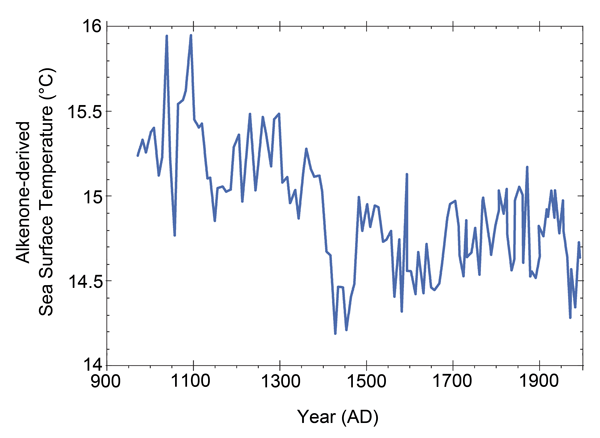Reference
Abrantes, F., Rodrigues, T., Montanari, B., Santos, C., Witt, L., Lopes, C. and Voelker, A.H.L. 2011. Climate of the last millennium at the southern pole of the North Atlantic Oscillation: an inner-shelf sediment record of flooding and upwelling. Climate Research 48: 261-280.
Description
Abrantes et al. (2011) reconstructed a sea surface temperature (SST) history for waters off the coast of Porto, Portugal (at ~41.1°N, 8.9°W), covering the past thousand years, based on the alkenone index UK'37 that they derived from a sediment core extracted from a water depth of 80 meters in May 2002, which they calibrated against measured SSTs over the period 1945-2006. This work revealed the occurrence of the Little Ice Age, as well as what they describe as the "persistently higher temperatures registered in the AD 960-1300 interval that we identify as the MWP." And from a graph of their SST history, one can see that the peak warmth of the MWP was about 1.2°C greater than the peak warmth of the CWP during the late 20th century.





